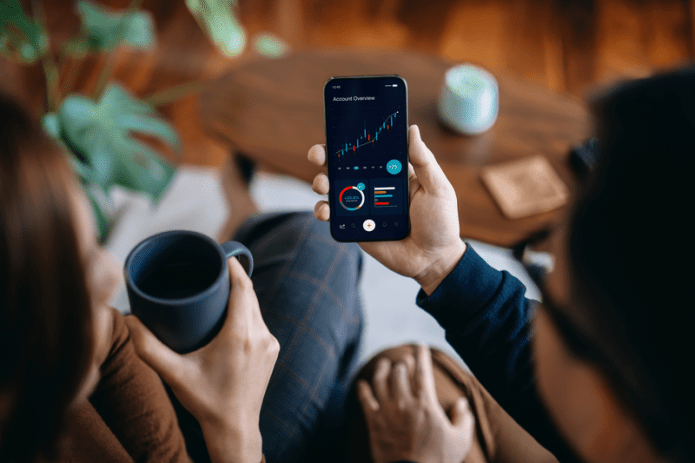Henderson High Income takes a distinct approach to generating income – combining equities and bonds into a single portfolio. We use our bond allocation to provide a reliable income stream. We then use our equities to provide potential income and capital growth.
So, how do we choose those equities?
We ask ourselves three core questions:
- What are the company’s key attributes?
- Is it in strong financial health?
- What’s the company worth?
When we ask these questions, we’re looking for some specific answers.
In answer to question 1 – what are the company’s key attributes – typically we look for understandable business models and a defendable competitive position.
For question 2, we seek good cash generation and a strong balance sheet.
To determine what a company is worth, we assess various valuation metrics including its share price relative to its earnings (its P/E ratio) and its dividend yield.
Example: Reckitt Benckiser
Reckitt Benckiser has been part of the portfolio since Autumn 2024. The company meets a lot of our criteria.
The company owns recognisable brands such as Nurofen, Dettol and Vanish. Some of these brands are leaders in their categories, giving them a durable market position. The business model is clear and these products are those that typically don’t fall out of favour in challenging periods.
It also has a strong track record of generating cash and typically pays out a high proportion of this to shareholders – with a dividend yield of 4.1%.
Finally, in early 2024 the company went through a share price fall. Its valuation fell to a 14x P/E ratio, (its share price vs its earnings) significantly below its 20 year average of 18x. Having met management and analysed the stock closely, we were confident that there was no deterioration in its key attributes and financial health to justify its current low valuation. As a result, we invested.
| Discrete year performance (%) |
Share price (total return) |
NAV (total return) |
| 30/06/2024 to 30/06/2025 |
22.64 |
14.88 |
| 30/06/2023 to 30/06/2024 |
2.26 |
13.56 |
| 30/06/2022 to 30/06/2023 |
8.30 |
7.66 |
| 30/06/2021 to 30/06/2022 |
-2.21 |
0.16 |
| 30/06/2020 to 30/06/2021 |
28.79 |
21.42 |
All performance, cumulative growth and annual growth data is sourced from Morningstar.
Source: at 30/06/25. © 2025 Morningstar, Inc. All rights reserved. The information contained herein: (1) is proprietary to Morningstar and/or its content providers; (2) may not be copied or distributed; and (3) is not warranted to be accurate, complete, or timely. Neither Morningstar nor its content providers are responsible for any damages or losses arising from any use of this information. Past performance does not predict future returns.
Disclaimer
References made to individual securities do not constitute a recommendation to buy, sell or hold any security, investment strategy or market sector, and should not be assumed to be profitable. Janus Henderson Investors, its affiliated advisor, or its employees, may have a position in the securities mentioned.
Not for onward distribution. Before investing in an investment trust referred to in this document, you should satisfy yourself as to its suitability and the risks involved, you may wish to consult a financial adviser. This is a marketing communication. Please refer to the AIFMD Disclosure document and Annual Report of the AIF before making any final investment decisions. Past performance does not predict future returns. The value of an investment and the income from it can fall as well as rise and you may not get back the amount originally invested. Tax assumptions and reliefs depend upon an investor’s particular circumstances and may change if those circumstances or the law change. Nothing in this document is intended to or should be construed as advice. This document is not a recommendation to sell or purchase any investment. It does not form part of any contract for the sale or purchase of any investment. We may record telephone calls for our mutual protection, to improve customer service and for regulatory record keeping purposes.
Issued in the UK by Janus Henderson Investors. Janus Henderson Investors is the name under which investment products and services are provided by Janus Henderson Investors International Limited (reg no. 3594615), Janus Henderson Investors UK Limited (reg. no. 906355), Janus Henderson Fund Management UK Limited (reg. no. 2678531), (each registered in England and Wales at 201 Bishopsgate, London EC2M 3AE and regulated by the Financial Conduct Authority), Tabula Investment Management Limited (reg. no. 11286661 at 201 Bishopsgate, London, United Kingdom, EC4A 1BD and regulated by the Financial Conduct Authority) and Janus Henderson Investors Europe S.A. (reg no. B22848 at 78, Avenue de la Liberté, L-1930 Luxembourg, Luxembourg and regulated by the Commission de Surveillance du Secteur Financier).
Janus Henderson is a trademark of Janus Henderson Group plc or one of its subsidiaries. © Janus Henderson Group plc

